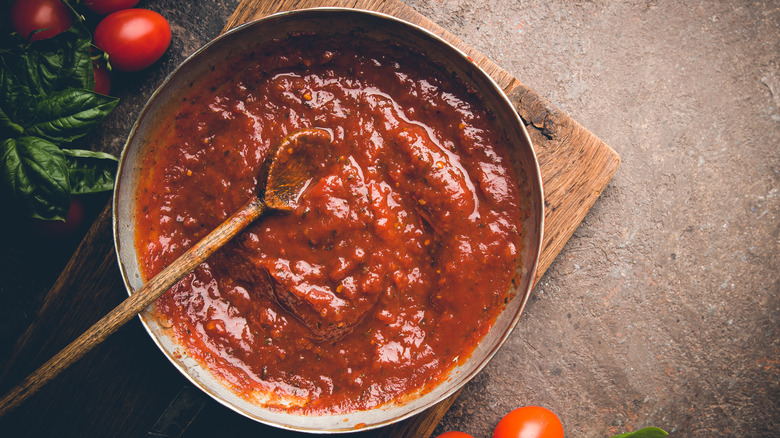The Quick Step To Prevent Sharp Corners In Lasagna
There are often two schools of thought as to which piece of lasagna is better — the gooey and saucy center or the slightly crispy corners. Whether it's the audibly crunchy and layerless version, deconstructed lasagna, or your mom's signature casserole, there's definitely an audience for crisp lasagnas. However, undercooked and sharp corners might make even the most devout fans of crispy lasagna rethink their stance. Whether you're a "team middle piece" or not, we've got a trick to make those pesky corners slightly softer.
While it may go without saying, constructing the perfect lasagna is no easy feat. A time-consuming labor of love, the dish requires the proper ingredients in addition to the proper technique — yes, there is actually a correct way to layer ingredients. In fact, learning how to skillfully construct a lasagna might just be the key to avoiding a dreadfully dehydrated lasagna with half-baked corner noodles. In an effort to rid homemade lasagna of sharp corners, there's one speedy and often overlooked step that you shouldn't forget.
Saying goodbye to jagged edges
One of the main reasons for too-hard and borderline sharp corner noodles relies on the type of pasta used. Unsurprisingly, dried lasagna sheets can be, well, dry. That's why if you decide to use them, it's absolutely necessary to rehydrate them. Though you don't always need to parboil them beforehand, it's important to ensure that you spread sauce like ragù or béchamel right to the edges. Alternatively, you can also soften edges by adding a touch of water on rigid corners.
However, there is a difference between keeping your lasagna moist and making it soupy. While noodles should be well-covered, they shouldn't be overly saturated in sauce (or excess water) either. Along with evenly coating each layer of lasagna, take care not to add too much liquid as this will render the dish watery. Of course, for extra insurance against undercooked corners and potentially tooth-cracking edges, think about how you cook the dish.
When covered tightly with aluminum foil, a lasagna can better retain moisture, reducing its potential for drying. The only risk is that the top of the pasta dish might not brown as much as it would when baked uncovered. But, you could simply remove the foil towards the end of cooking to impart a bit of color without completely drying out the whole thing — just like that, you'll make sharp lasagna corners a thing of the past!

